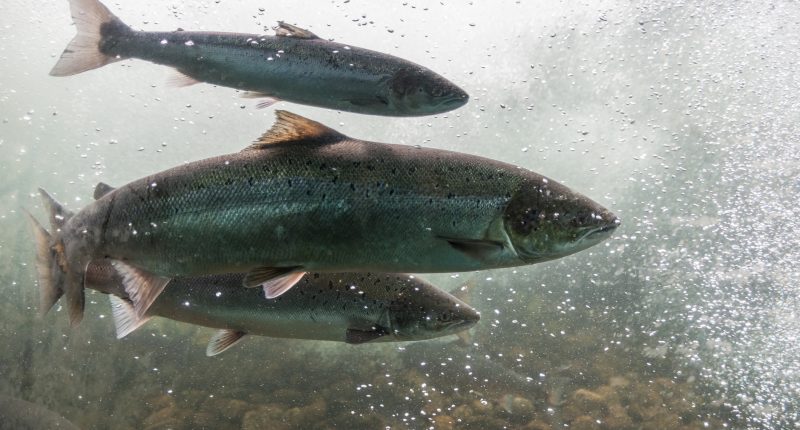
Artificially Cooling Rivers Could Protect Fish From Climate Change – In the midst of a heat wave in Nova Scotia, Canada, this July, humans sought out air conditioning and shelter in the shade. Fish in the Wrights River, meanwhile, converged on what patches of deeper, cooler water they could find, like holes in the streambed out of the sun’s glare. One of those areas of relief, though, hadn’t occurred naturally. It had been created by humans pumping cold water from a nearby well into the overheated stream. Cold-loving fish, like Atlantic salmon, flocked to this stretch of water in droves.
Researchers had devised the setup as part of an experiment to test a potential method for helping Atlantic salmon survive rising water temperatures caused by climate change. Like humans, the fish thrive at a certain temperature range, ideally between about 43°F and 72°F. Spending too much time in water above about 82°F can be lethal. Freshwater rivers and streams like the Wrights are critical to maintaining salmon populations—it’s where young Atlantic salmon grow through their initial life stages before heading towards the ocean; and it’s where they return as adults to spawn. Worries are growing that, due to climate change, these rivers are getting too hot for the fish to survive. In the U.S. Northeast, just a few rivers on the Gulf of Maine still support Atlantic salmon populations—the species’s range once extended as far south as the Long Island Sound. In Canada, meanwhile, populations in some southern rivers have crashed as rising temperatures take their toll.
Salmon can tolerate high temperatures for short periods of time. Migrating upriver through shallow water warmed by the sun, the fish tend to seek out what researchers refer to as “thermal refuges,” spots of relatively cool water where they can rest before journeying farther upstream. The idea behind the experiments this past summer, presented at a meeting of the Geological Society of America on Oct. 17, is to start testing whether it might be possible to begin creating man-made thermal refuges along rivers in order to help Atlantic salmon survive. (The research has not yet been published.)
Kathryn Smith, a PhD candidate at Dalhousie University who led the research, says that some people see such an approach as being all but inevitable in the years ahead. “We need to think about how we can adapt to that warming world and still preserve the Atlantic salmon [and other] coldwater biodiversity in our rivers,” she says.
Read more: One Man’s Quest to Heal the Oceans—And Maybe Save the World
In her experiments, Smith and her team tested two approaches. In what was referred to as the “active” approach, they pumped cold water from a well into the river, while in the “passive” approach, they redirected an offshoot of the river underground for a stretch, where it would be cooled by the surrounding soil and rocks. When the offshoot returned to the main body of the river, it created a patch of water a few degrees colder than the surroundings. In both cases, fish species including salmon soon sought out the artificial cold water spots, though the active approach brought more fish, especially during the July heat wave that happened to coincide with the experiment. Hundreds of fish, including brown trout and white lake chub, as well as dozens of salmon, often congregated in the patch of cold water from the well to escape the heat.
While much research has gone into studying and mapping thermal refuges in rivers, Smith says that no one to her knowledge had yet attempted to create artificial cold spots. It was an open question whether the fish would be able to make use of them. The hope, with the current results, is to conduct more tests to see what approaches work best for different regions and fish species, and eventually to apply the systems to help fish species around the world threatened by warming rivers.
“It was exhilarating,” Smith says, on seeing the fish congregating in the cool patch of water. “[There was] lots of hooting and hollering from excitement.”









